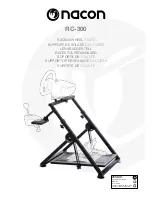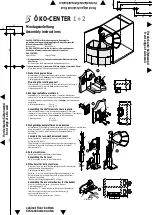
English-
17
16
- English
C.P.S.C.16 CFR Part 1203
United States Federal Safety Standard for Bicycle Helmets
(Consumer Product Safety Commission)
CE, EN1078 (Europe Safety Standard)
FCC ID: 2AEHH- SAFESOUND
FCC Part 15B,Part 15C
RED Directive 2014/53/EU
AS/NZS 2063:2008 (Australia/New Zealand Bicycle Helmet
Safety Standard)
Safety Certifications
Instructions for use and care
No helmet can protect the wearer against all possible
impacts.
The helmet is designed to be retained by a strap
under the lower jaw.
To be effective, a helmet must fit and be worn
correctly. To check for correct fit, place helmet on
head and make any adjustments indicated. Securely
fasten retention system. Grasp the helmet and try to
rotate it to the front and rear. A correctly fitted helmet
should be comfortable and should not move forward
to obscure vision or rearward to expose the forehead.
No attachments should be made to the helmet except
those recommended by the helmet manufacturer.
The helmet is designed to absorb shock by partial
destruction of the shell and liner. This damage may
not be visible. Therefore, if subjected to a severe
blow, the helmet should be destroyed and replaced
even if it appears undamaged.
The helmet may be damaged and rendered
ineffective by petroleum and petroleum products,
cleaning agents, paints, adhesives and the like,
without the damage being visible to the user.
A helmet has a limited lifespan in use and should be
replaced when it shows obvious signs of wear.
This helmet should not be used by children while
climbing or doing other activities where there is a risk
of hanging or strangulation if the child gets trapped
whilst wearing the helmet.
(a)
(b)
(c)
(d)
(e)
(f)
(g)
(h)
This device complies with part 15 of the FCC Rules.
Operation is subject to the following two conditions:
(1) This device may not cause harmful interference, and
(2) this device must accept any interference received,
including interference that may cause undesired operation.





























